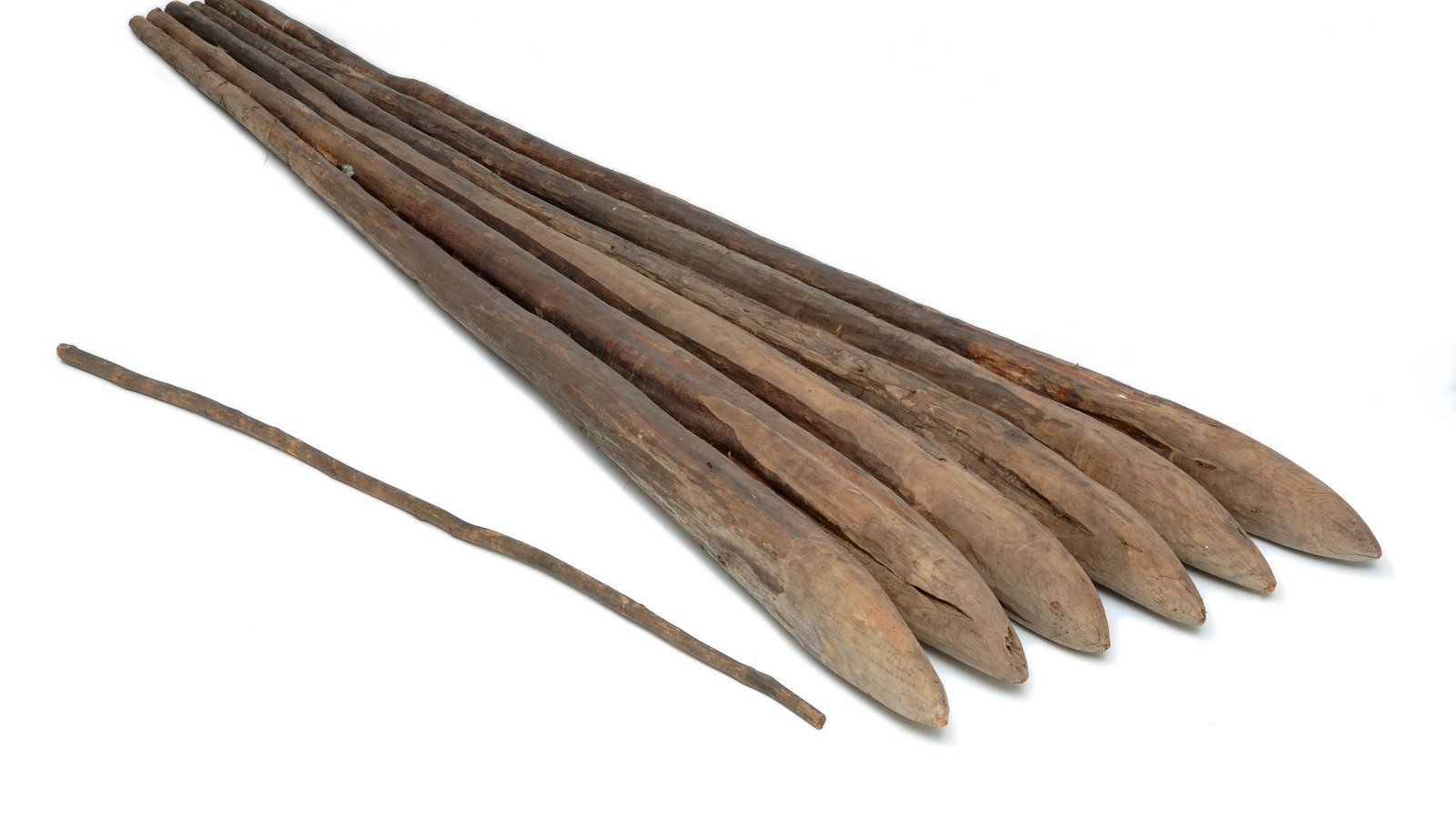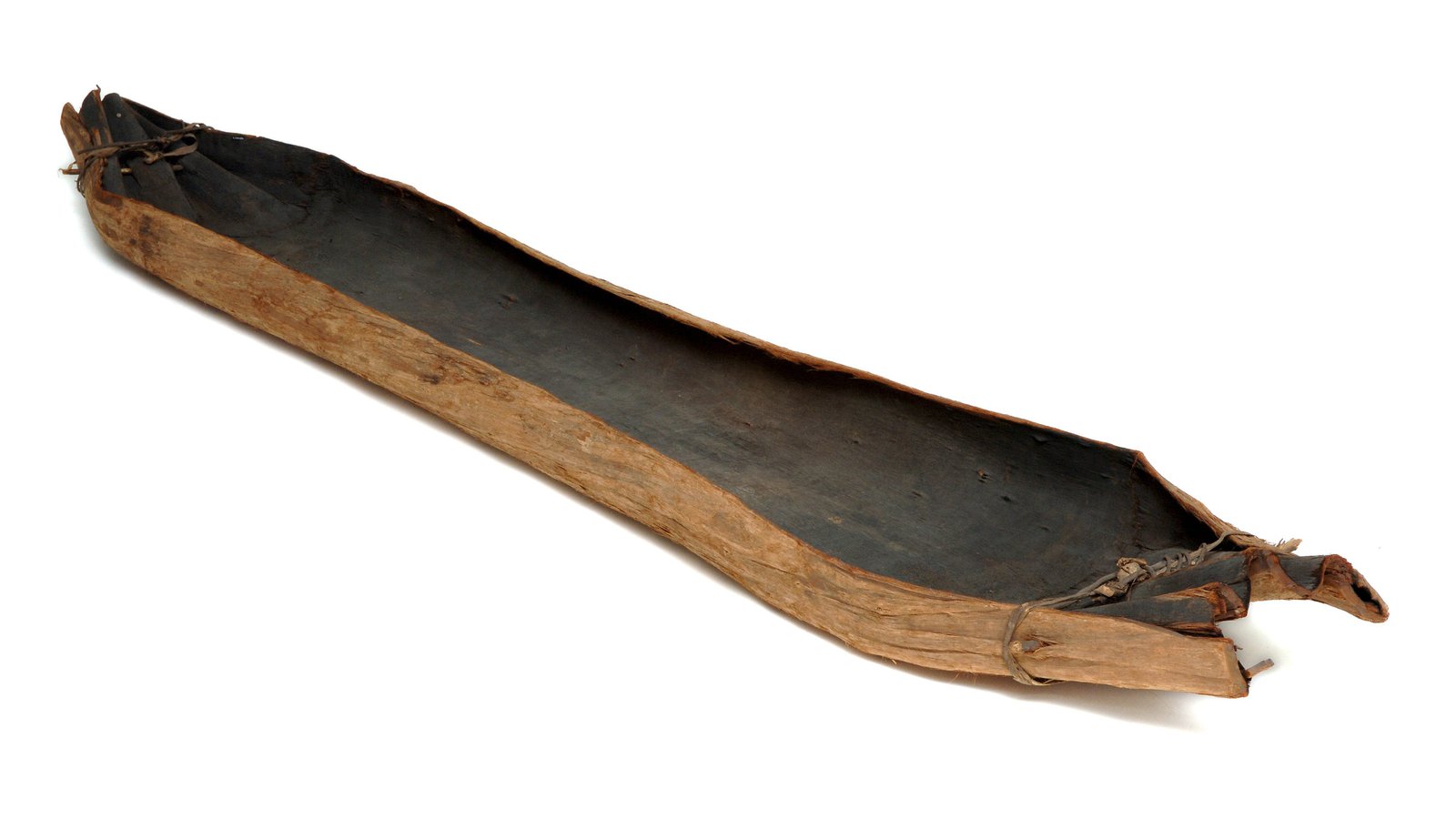First Nations watercraft culture
Dr Mariko Smith is a Yuin woman. She is a First Nations Assistant Curator at the Australian Museum and Honorary Associate in the School of Literature, Art and Media at the University of Sydney.
On this page...
Adaptation to local environments
Our island continent is bordered by a number of seas and oceans and has numerous estuary systems. If you have a closer look at satellite data and geospatial imaging maps of Australia, these waterways actually resemble veins of the human body, and much like how veins carry blood and nutrients around the inside our bodies, waterways are the life-force of this Country and their flows ensure the overall health, wellbeing, and survival of all living things and landforms here.
First Nations peoples on this continent now known as Australia have learnt directly from Country over the course of many tens of thousands of years and generations about how to survive and thrive in our local environments and ecosystems. Over time, we have adapted to changing conditions, seasons and climates, and this is reflected in the deep knowledge that has been developed and reproduced through oral traditions, conducting caring for Country practices, and the making of objects for daily life.
One example is the correlation between the location of waterways and the construction of watercraft in particular areas by First Nations peoples. Water is life, and access is really important for cultural reasons as well as for survival. Aboriginal and Torres Strait Islander peoples made and used watercraft for many different things and reasons, depending on where they were and what was available there.
These vessels enabled people to travel from place to place, covering a range of distances for many different purposes, including to fish and harvest food, participation in activities including cultural ceremonies and strategic engagements, and to carry trade goods between territories. Watercraft provided a means for travel between islands, for crossing creeks, rivers, and lakes; and certain types could be used for adventures beyond the shore into oceans.
Making watercraft: understanding your local environment and conditions
There is tremendous diversity in what types of watercraft have been made and used by First Nations peoples across Australia. A key consideration for the design and construction of the various rafts, canoes, outriggers, and dug-outs, etc. is what vessel best suits the area and water conditions it would be used in.
Practicality and sustainability, coupled with a deep respect and awareness of one’s local environment and ecosystem defines many of our traditional cultural practices, and this is especially the case with our watercraft. A lot of the relevant considerations around the design and construction of watercraft relate to common sense factors.
If your local waterways tend to be calm estuaries and sheltered bays, for example, which are found along much of the south-east coastal region of Australia, then a shallow craft such as a tied-bark canoe or raft works well. These types would be less suitable for more open-sea travel, where rougher swells and greater distances between places such as islands require a more robust vessel with features that can withstand such conditions found in the northern regions of Australia, such as a dug-out canoe of north Queensland, stitched bark canoe of central and southern coast of Queensland or the Pacific-style with outriggers of northern Australia and the Torres Strait.
This diversity and variety demonstrate the widely different environments and conditions around Australia, and how us First Nations peoples had developed our own technical styles and cultural traditions in our local areas based on our own direct experiences and understandings of Country.
There were instances of stylistic influences from other people, such as communities in Northern Territory and around the Torres Strait learning from other cultures, namely Macassans and Melanesian nations respectively. This goes to show that there have been longstanding and long-distance trade networks which involved not just the trading of objects, but also cross-cultural communication and the exchanges of ideas.
Making watercraft: using the right materials at the right time
Environmental knowledge about natural resources including availability, sustainability, harvesting and seasonal quality of wood species is key to the successful manufacture and use of watercraft in Australia. Some species work much better and easier than others, and this special knowledge has been developed over countless years of people experimenting in processes of trial-and-error to find out the best selections and techniques.
For example, Aboriginal people of the south-east region preferred a thin-barked tree from which a large, pliable piece of bark can be removed in one whole piece and then folded into shape known as a tied bark canoe. There are a number of Eucalyptus types that are very suitable for this type of watercraft, namely varieties of stringybarks across the south-east and also swamp mahogany in northern coastal New South Wales and south-eastern coastal Queensland. The bark from these trees are best harvested when the sap is running rich in the inner layers, which ensures a workable and flexible bark sheet with minimal to no cracks and breaks – seasonally, this is typically after the winter rains in the south-east which give the trees a good soaking.
In 2018, Mariko completed a PhD about Indigenous watercraft practice in the context of community cultural resurgence initiatives across the south-east coast of Australia, and this article is based on research from her thesis (unpublished).







